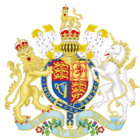Public Worship Regulation Act 1874 facts for kids

|
|
| Long title | An Act for the better administration of the Laws respecting the regulation of Public Worship. |
|---|---|
| Citation | 37 & 38 Vict. c. 85 |
| Introduced by | Archbishop of Canterbury Archibald Campbell Tait, 20 April 1874, private member's bill |
| Territorial extent | England, Channel Islands, Isle of Man |
| Dates | |
| Royal assent | 7 August 1874 |
| Commencement | 1 July 1875 |
| Repealed | 1 March 1965 |
| Other legislation | |
| Repealed by | Ecclesiastical Jurisdiction Measure 1963 (No 1), art 87, Sch 5 |
|
Status: Repealed
|
|
The Public Worship Regulation Act 1874 was a law made by the Parliament of the United Kingdom. It was suggested by the Archbishop of Canterbury, Archibald Campbell Tait. The main goal of this law was to control certain religious practices. These practices were part of a movement called Anglo-Catholicism within the Church of England.
This law was strongly supported by the Prime Minister, Benjamin Disraeli. However, the leader of the Liberal party, William Ewart Gladstone, was against it. Even Queen Victoria thought it was a good idea. The law was not used very often. But some church leaders were sent to prison for not following its rules. This caused a lot of problems for the Church of England.
Contents
Why Was This Law Created?
Archbishop Tait's idea for this law caused a lot of discussion. Prime Minister Benjamin Disraeli supported it. He said the law was meant to stop "ritualism." This word described the special ceremonies and traditions of the Oxford Movement. Disraeli even called these practices "a Mass in masquerade."
Queen Victoria also agreed with the law's aim to support Protestantism. But William Ewart Gladstone, a leader who believed in separating church and state, was upset. He felt it was wrong for Parliament to argue about church services.
How Did the Act Change Things?
Before this law, the Church of England managed its worship rules through a special court. This court was called the Court of Arches. People could appeal its decisions to another group called the Judicial Committee of the Privy Council.
The new Act created a different court. A judge named Lord Penzance led this court. Many people were shocked that the government was getting involved in church worship. They were also worried that a non-religious court would oversee church matters.
What Could People Do?
Section 8 of the Act allowed certain people to complain to a bishop. An archdeacon, a church warden, or three adult men from a parish could make a complaint. They could say that:
- Something in the church building, like decorations, was changed without permission.
- The church leader used forbidden items during services in the last year. Or they did not use items that were required.
- The church leader did not follow the rules for services. These rules were found in the Book of Common Prayer. Or they added, changed, or removed parts of the services without permission.
The bishop could choose to stop the complaint from going forward. But if the bishop allowed it, the people involved could agree to follow the bishop's decision. If they did not agree, the matter would go to trial. The bishop could issue a formal order, called a monition.
What Happened Because of the Act?
This law caused a big conflict between two groups in the church. One group was the Anglo-Catholic English Church Union. The other was the evangelical Church Association. Many church leaders were taken to court. Five of them were even sent to prison for not obeying the court's orders.
Church Leaders Sent to Prison
- Revd Arthur Tooth, from St James's, Hatcham, in 1877.
- Revd T. Pelham Dale, from St Vedast Foster Lane, in the City of London, in 1880.
- Revd Richard William Enraght, from Holy Trinity, Bordesley, West Midlands, in 1880.
- Revd Sidney Faithorn Green, from St John's, Miles Platting, Manchester, from 1881 to 1882.
- Revd James Bell Cox, from St Margaret's, Liverpool, in 1887.
A wealthy person named George Boyle, 6th Earl of Glasgow helped these church leaders. He gave a lot of money to help with their legal costs and to support them.
The court cases stopped after 1906. A special group called a Royal Commission said that different ways of worship were acceptable. The Act stayed in force for 91 years. It was finally removed on March 1, 1965. This happened because of a new law called the Ecclesiastical Jurisdiction Measure 1963.
Where Did the Act Apply?
This law applied to England, the Channel Islands, and the Isle of Man.
See also
- Anglican eucharistic theology


